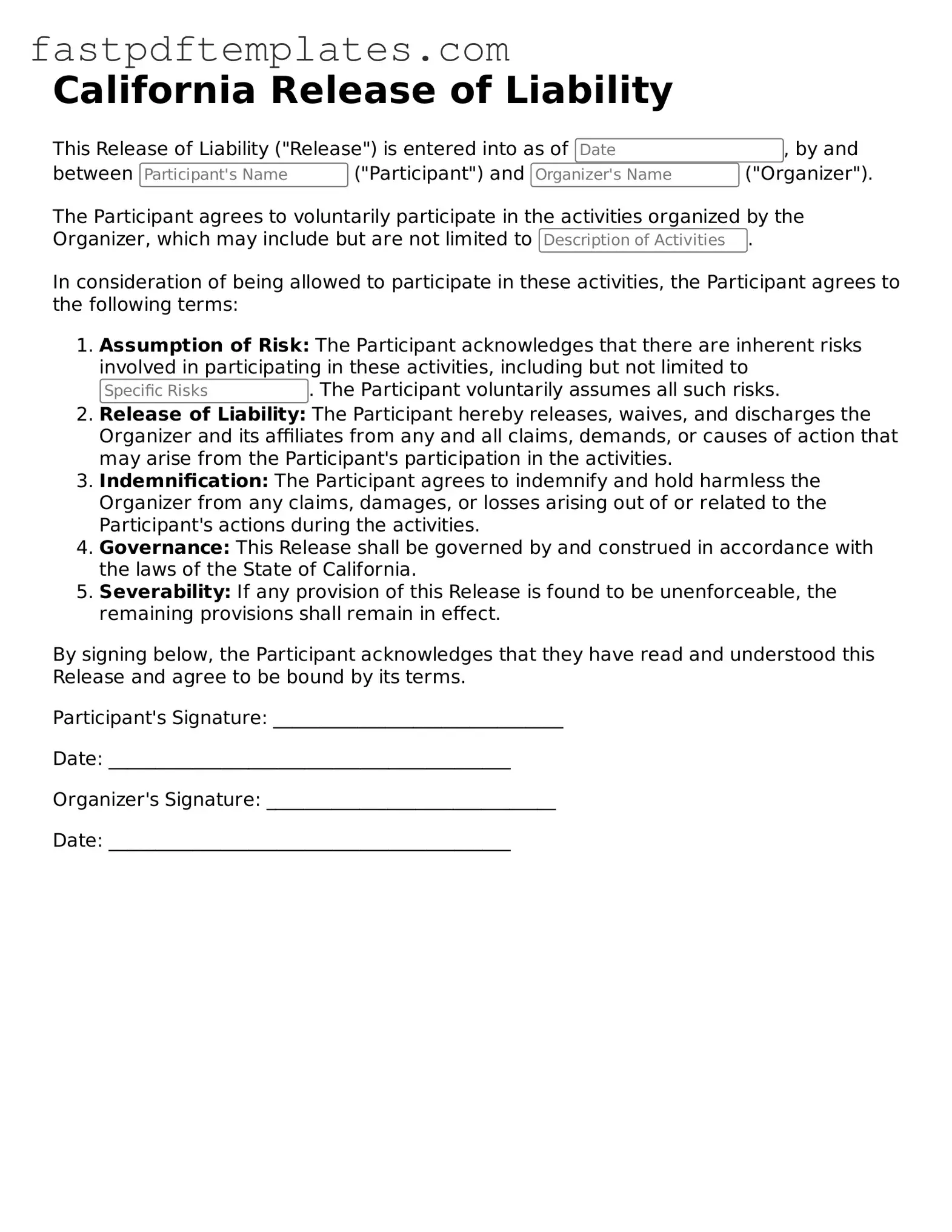The California Release of Liability form is similar to the Waiver of Liability form, which is commonly used in various activities, including sports and recreational events. Both documents serve to protect the organizer or provider from legal claims resulting from injuries or damages that may occur during the activity. By signing a Waiver of Liability, participants acknowledge the risks involved and agree not to hold the organizer responsible for any accidents that may happen.
Another document that shares similarities with the Release of Liability is the Indemnity Agreement. This agreement requires one party to compensate another for any losses or damages incurred. Like the Release of Liability, it aims to shift the financial burden from one party to another, ensuring that if something goes wrong, the responsible party is not left to cover the costs alone. Both documents emphasize the importance of understanding and accepting risks associated with specific activities.
The Participant Agreement is also akin to the California Release of Liability form. This document outlines the terms and conditions under which a participant engages in an activity, often including a section that addresses liability. By signing a Participant Agreement, individuals agree to the rules and accept the inherent risks, similar to how they would with a Release of Liability. Both documents aim to clarify expectations and responsibilities for all parties involved.
Another related document is the Consent Form, which is often used in medical or research settings. While the primary purpose of a Consent Form is to inform individuals about the procedures and potential risks involved, it also serves to release the provider from liability for any adverse effects. Just like the Release of Liability, it emphasizes informed consent and the participant's understanding of the risks associated with their decision.
The Hold Harmless Agreement is another document that functions similarly to the California Release of Liability. This agreement protects one party from being held liable for any injuries or damages that may occur during a specified activity. By signing a Hold Harmless Agreement, participants acknowledge the risks and agree not to pursue legal action against the party providing the activity. This document, like the Release of Liability, is crucial for risk management.
In addition, the Safety Acknowledgment Form can be compared to the Release of Liability. This form is often used in various contexts, including workplaces and recreational activities, to ensure that participants understand the safety protocols and the risks involved. By signing the Safety Acknowledgment Form, individuals confirm that they have been informed of the risks and agree to follow the safety guidelines, similar to the acknowledgment made in a Release of Liability.
The Rental Agreement also shares characteristics with the California Release of Liability form, especially when it includes clauses about liability. Rental Agreements often require renters to accept responsibility for any damages or injuries that occur during their use of the property. By signing, renters acknowledge their understanding of the risks and agree to hold the property owner harmless, much like the intent of a Release of Liability.
Lastly, the Event Registration Form can be likened to the Release of Liability, particularly when it includes a liability waiver. When individuals register for an event, they may be required to sign a form that outlines the risks associated with participation. This form often includes a clause that releases the event organizers from liability for any injuries or accidents, reflecting the same principles found in the California Release of Liability form.
